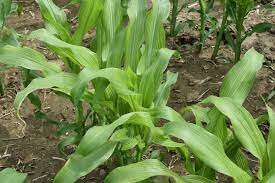Sulphur has become an extremely important nutrient for the crops in India and across the world. The extensive usage of sulphur WDG by the farmers across the world has shown how important and beneficial this element has become for the crops. There are various forms of sulphur available in the market and it is extremely important to select the right one and provide it to the crops while the crops are in the growing stages so that they could be benefitted the most and get all the necessary nutrients required.
Considerations for fall sulphur application
When fall is around the corner the strategy for your post-harvest fertilizer application must be concrete so that everything goes smoothly as expected. Sulphur suppliers in India manufacture and supply different types of sulphur rich fertilizers and farmers look for their best options. If you want to ensure the most efficient use of sulphur for the next year’s crop, below are some of the factors you can consider.
- Soil Type
For sulfate-containing sources, soils having a higher propensity for leaching are not ideal candidates for fall sulphur application. Sulfate moves through the soil profile, therefore soils with a medium to coarse texture aren’t ideal candidates for sulphur application in the fall. Fine textured, poorly drained soils have a lower chance of leaching, but if fertiliser is applied in the autumn, it may still be necessary to apply S in the spring.
- Your source of sulphur
Leaching is most likely to occur with sulphate sulphur. Elemental sulphur does not leach, however the oxidation of elemental sulphur to sulphate is difficult to estimate. Soil organisms convert elemental S to sulphate through the process of oxidation. Moisture is required for the process, which is influenced by temperature. Although there is less chance of leaching loss with elemental S, there may not be enough sulphate available in the spring when the plant requires it most.
- Previous results
The availability of sulphur is heavily influenced by the weather. Examine previous outcomes when applying in the fall to decide the best course of action for future years. Consider switching to all spring applications or altering the source of S if plants are routinely S deficient in the spring following a fall treatment. S insufficiency in maize may be rectified during the V5 development stage without lowering yields, according to research. Remember that even if you have a spring deficit, you may still get the most out of your crop.
Sources of elemental sulphur fertilizer
The oxidation of elemental sulphur to sulphate is a lengthy process that necessitates rather high soil temperatures for effective oxidation. Even when elemental sulphur is sprayed in the autumn, the availability of sulphate early in the growth season might be low when elemental sulphur is the main fertiliser source. The best time for elemental sulphur oxidation is probably from late June to August, when soils are at their hottest. Striping may still occur in sulfur-limited sections of fields due to conversion to sulphate occurring too late to remedy any deficiencies in typical years prior to V10.
According to study, fall application of sulphate sulphur forms can function, albeit the efficacy of fall application is dependent on the application rate and soil type the fertiliser is administered to. If you’re going to use sulphate sulphur in the fall, go for the higher end of the recommended rate for corn. Sand and silt loam soils, which have the highest capacity to leach sulphate, are excellent candidates for spring application.
So, the best option for sulphur applications has not just a single answer but many factors need to be considered while applying sulphur.

